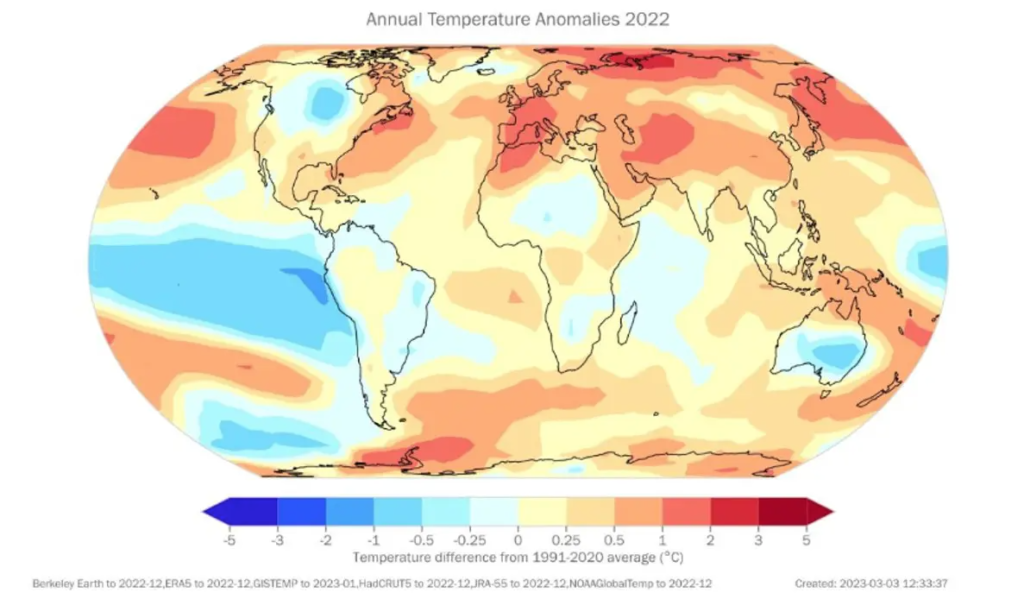World Meteorological Organization publishes State of the Global Climate 2022
(sustainabilityenvironment.com) – The increase in sea level is now double that in the 1990s, while for glaciers “the game is already lost” because “the concentration of CO2 in the atmosphere is already too high”. These are some of the messages launched by the World Meteorological Organization (Omm) on the occasion of Earth Day 2023 with the report State of the Global Climate. In the usual 360-degree review of planet’s climate status, the UN agency updates to 2022 the data of IPCC reports, which cover until 2020.
Temperatures and greenhouse gases, record values
The State of the Global Climate confirms, in line with a recent report from the European satellite monitoring system Copernicus, that the last eight years—between 2015 and 2022—have been the hottest on record since systematic surveys began, even though the last three have been marked by La Niña, the atmospheric teleconnection that “cools” the world’s climate.
The Omm research states that in 2022, the planet’s average temperature was +1.15 °F higher than that of the pre-industrial era, which is typically defined as the years between 1850 and 1900. The error range for this figure is between 1.02°C and 1.28°C. The values of greenhouse gases in the atmosphere last year (the most recent year for which we have consolidated data) set new records: CO2 at 415.7 ppm, or 149% more than the pre-industrial era; natural gas at 1908 ppb, or well +262% on the second half of the nineteenth century; and NOx at 334.5 ppb, or 124% more than the pre-industrial era.
Climate status: the climate crisis and the oceans
Another record much less in the spotlight concerns the oceans. In 2022, the water masses of the Planet recorded the new record for heat quantity. This is a warming trend that will continue for centuries or millennia no matter what we do today. And it will increase sea heat waves and profound changes in marine ecosystems.
Meanwhile, sea level rise has risen from 2.27 millimetres in the year 1993-2002 to 4.62 mm in 2013-2022. Almost double that. Melting of ice sheets has contributed to these increases in an increasingly massive way: between 2005 and 2019, melting waters from terrestrial glaciers, Greenland and Antarctica are responsible for 36% of the increase in the seas, while the warming of the oceans through thermal expansion is accounted for 55%.
Alarm melting of glaciers
The report on the global climate status also devotes much space to the consequences of global warming on the cryosphere and glaciers. Between October 2021 and the same month of 2022, on average the glaciers for which long-term observations exist have thinned by an average of 1.3 metres. A much greater loss than in the last decades. And 6 of the 10 worst years occurred after 2015.
Leading the list of hotspots for melting glaciers are the Alps: last year was broken every previous record due to a combination of poor snow cover, repeated and persistent heat waves and a Sahara sand intrusion. Switzerland has lost 6.2% of the volume of its glaciers in 12 months, and 30% in the last 20 years. The O’s isotherm on July 25 was at 5,184 meters, never this high. According to the IPCC, over 6000 billion tonnes of ice have been lost globally in 30 years (1993-2019).

